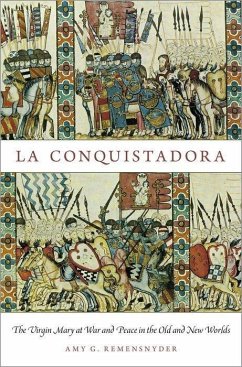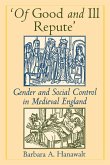Through the Virgin Mary, Remensnyder examines the dynamics of Christian and non-Christian identity in the pre-modern Spanish world. Rather than focusing on the Virgin Mary, she instead uses the Virgin as a lens to understand how people established identities for themselves in the contexts of domination and devotion. The first half of the book looks at how Spanish Christians used the Virgin's martial functions to draw lines of demarcation between themselves and non-Christians both metaphoric differences such as doctrinal differences and religious polemic and physical ones of war. She could also embody religious borderlands, the places of hybrid and fluid spiritual identities. The second half of the book looks at how the Virgin served as a place of passage where religious lines could be crossed through conversion. The book considers Christian stories that depict Mary as a particularly effective agent in the conversion of Jews, Muslims, and natives of the Americas. The project also examines those Jews, Muslims, and Indians who converted to Christianity: the Virgin was a figure of power through whom they could express their new hybrid identities.
While most books about Mary emphasize her role as the compassionate mother of God, this book uncovers her significant role as an active and often belligerent patron of warfare, as seen from the mosques and castles of medieval Iberia to the cities and shrines of colonial Mexico and finally to present-day New Mexico. Amy Remensnyder explores Mary's prominence on and off the battlefield in the culturally and ethnically diverse world of medieval Iberia, where Muslims, Christians, and Jews lived side by side, and in colonial Mexico, where Spaniards and indigenous peoples mingled. As this array of peoples turned to her to articulate their identities, Mary was drawn into both hostile and peaceful cross-cultural encounters. Although Mary became an icon of the Christian conquest of Muslims, medieval Muslims and Christians shared her, sometimes even joining together in rituals of worship in her churches. In the New World, some indigenous peoples of the Americas appropriated from the Spanish the idea of Mary as Conquistadora, using it to reinforce the identity they fashioned for themselves as native conquistadors. Offering a ground-breaking look at the Virgin Mary, La Conquistadora connects medieval and early modern understandings of this iconic figure to reveal her enduring legacy.
Hinweis: Dieser Artikel kann nur an eine deutsche Lieferadresse ausgeliefert werden.
While most books about Mary emphasize her role as the compassionate mother of God, this book uncovers her significant role as an active and often belligerent patron of warfare, as seen from the mosques and castles of medieval Iberia to the cities and shrines of colonial Mexico and finally to present-day New Mexico. Amy Remensnyder explores Mary's prominence on and off the battlefield in the culturally and ethnically diverse world of medieval Iberia, where Muslims, Christians, and Jews lived side by side, and in colonial Mexico, where Spaniards and indigenous peoples mingled. As this array of peoples turned to her to articulate their identities, Mary was drawn into both hostile and peaceful cross-cultural encounters. Although Mary became an icon of the Christian conquest of Muslims, medieval Muslims and Christians shared her, sometimes even joining together in rituals of worship in her churches. In the New World, some indigenous peoples of the Americas appropriated from the Spanish the idea of Mary as Conquistadora, using it to reinforce the identity they fashioned for themselves as native conquistadors. Offering a ground-breaking look at the Virgin Mary, La Conquistadora connects medieval and early modern understandings of this iconic figure to reveal her enduring legacy.
Hinweis: Dieser Artikel kann nur an eine deutsche Lieferadresse ausgeliefert werden.








